Get your touch receptors ready – we are about to explore an ice cave!
At the foothills of the Alps’ tallest mountain – the Mont Blanc – lies the famous village of Chamonix, one of the oldest ski resorts in France. Upon my arrival, in Jan ’23, I immediately understood its popularity: it is set amongst some of the most dramatic peaks I have ever witnessed in the Alps. The drama of the ridge-lines, characterized by sharp granite needles, is amplified by the large difference in altitude between the peaks (~ 4,000 m) and the base of the village (1,035 m), making the surrounding mountains appear extra gigantic.
Because of the high average altitude of the Mont Blanc Massif, a large portion is capped by a thick layer of ice and snow year-round, giving birth to glaciers. One of these glaciers, the Mer de Glace, can be visited by taking the petite, red Montenvers cogwheel train departing from Chamonix village. Worth mentioning: this ride was opened over a 100 years ago, in the year 1908!
To be frank, I had come to Chamonix to take the ‘Aiguille du Midi’*, but this world record holding cable car – for steepest vertical ascent – turned out to be closed for maintenance. A blessing in disguise, as it’s how I ended up shaking hands with the ‘Sea of Ice’ instead. Yes, you read that right: you are in fact able to touch the glacier, skin to ice, by entering ‘La Grotte de Glace’ (literally translated as ‘cave of ice’), located at the bottom of a ~ 400-step staircase that is reached by taking a short gondola down from the Montenvers glacier viewpoint.
This memorable haptic (= relating to or based on the sense of touch) encounter was as exciting as it was tragic. Like most glaciers, the Mer de Glace is suffering severely from the consequences of climate change. Before visiting, I read many reviews of people complaining about the exhausting stairs; probably unaware these had to be built because of the large quantity of ice the glacier has lost. In recent hot summers, the glacier shrunk 100m in depth and 800m (!) in length. At the level of the cave, this means an average of 30-40 steps have to be added each year in order to safely reach the entrance.
I call it payback.
Now, even if you can’t see the effect of the higher temperatures, you can surely feel it. When the top layer of ice/snow (continuously) melts, it soaks into and warms the underlying layers, bringing the glacier’s core temperature up to ~ 0°C. Ice that’s essentially at the melting point is called temperate ice and when you place your hands on the grotto’s walls you will notice its surface is watery and not as icy to the touch as you would expect (except perhaps on very cold winter days when only the surface layer freezes). In the warmer months, I imagine water drops gliding down the tunnels like tears on a cheek, as an expression of Mother Nature’s sadness about just how quickly hundreds of years of history is flushed down the Montenvers valley.
Though this may sound a tad dramatic, perhaps personifying the glacier is an effective way to alert people to the seriousness of the situation. These historic cavern ‘tears’ once fell from the sky as snow, 12 km away, during the first ascent of Mont-Blanc in 1789 (!) and we hold significant power to at least parry dry them. Besides, I would much rather personify a glacier than those creepy artificial intelligence bots (yes Microsoft Bing, chat GPT, I am talking about you).
If you do decide to visit the cave, don’t forget to also explore its ice sculptures! You’ll be able to stand behind an ice bar, sit on ice benches and even pet a giant ‘glazed’ polar bear! To learn more about the glacier itself, I recommend visiting the educational center ‘Glaciorlum’, which is located next to ‘Le Refuge des Aiglons’ hotel; both a short walk from the train station you’ll arrive at.
Mais oui! Go make contact with the historic ice of Mer de Glace and feel its cry for help with your very own fingertips.
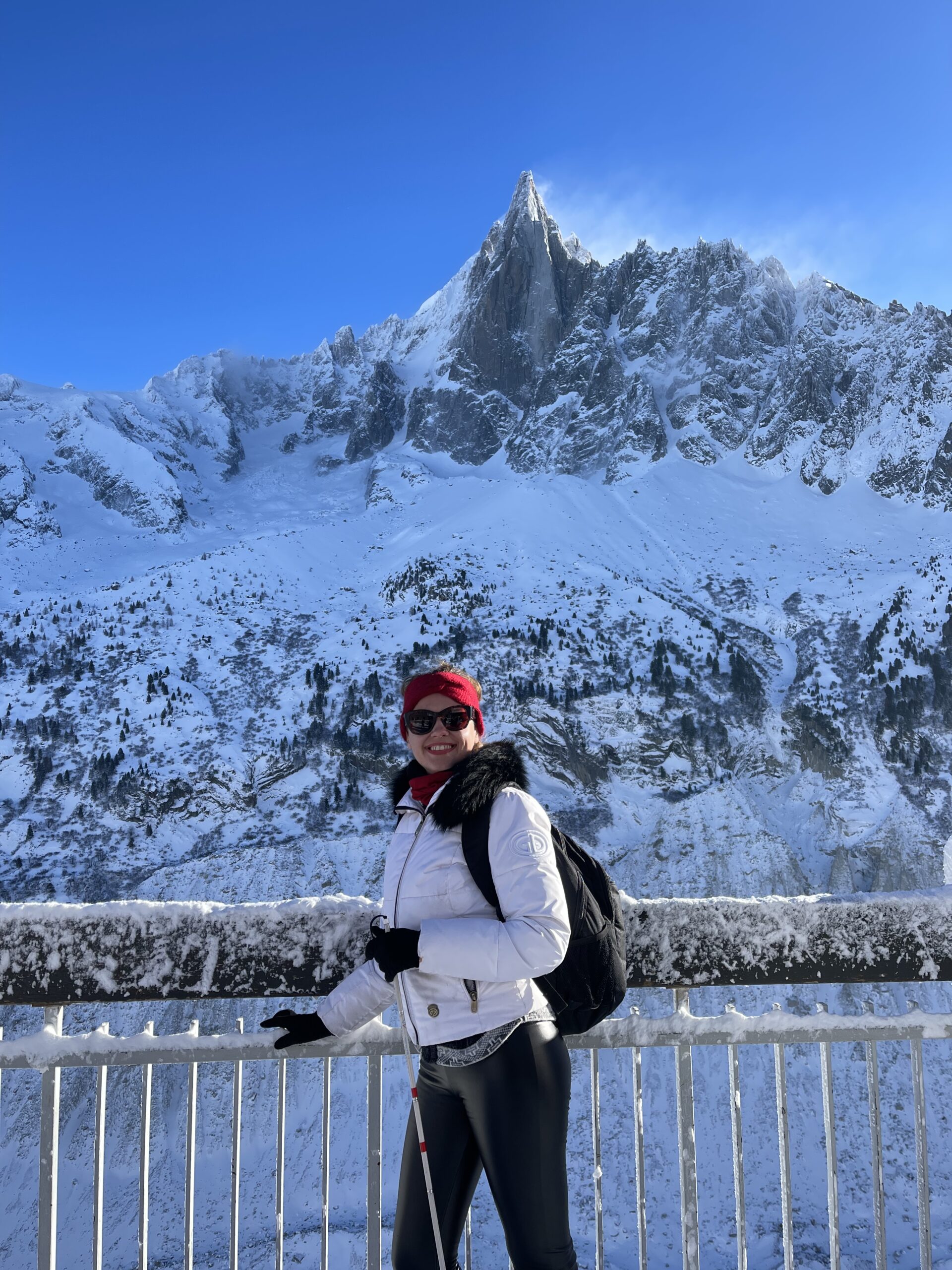
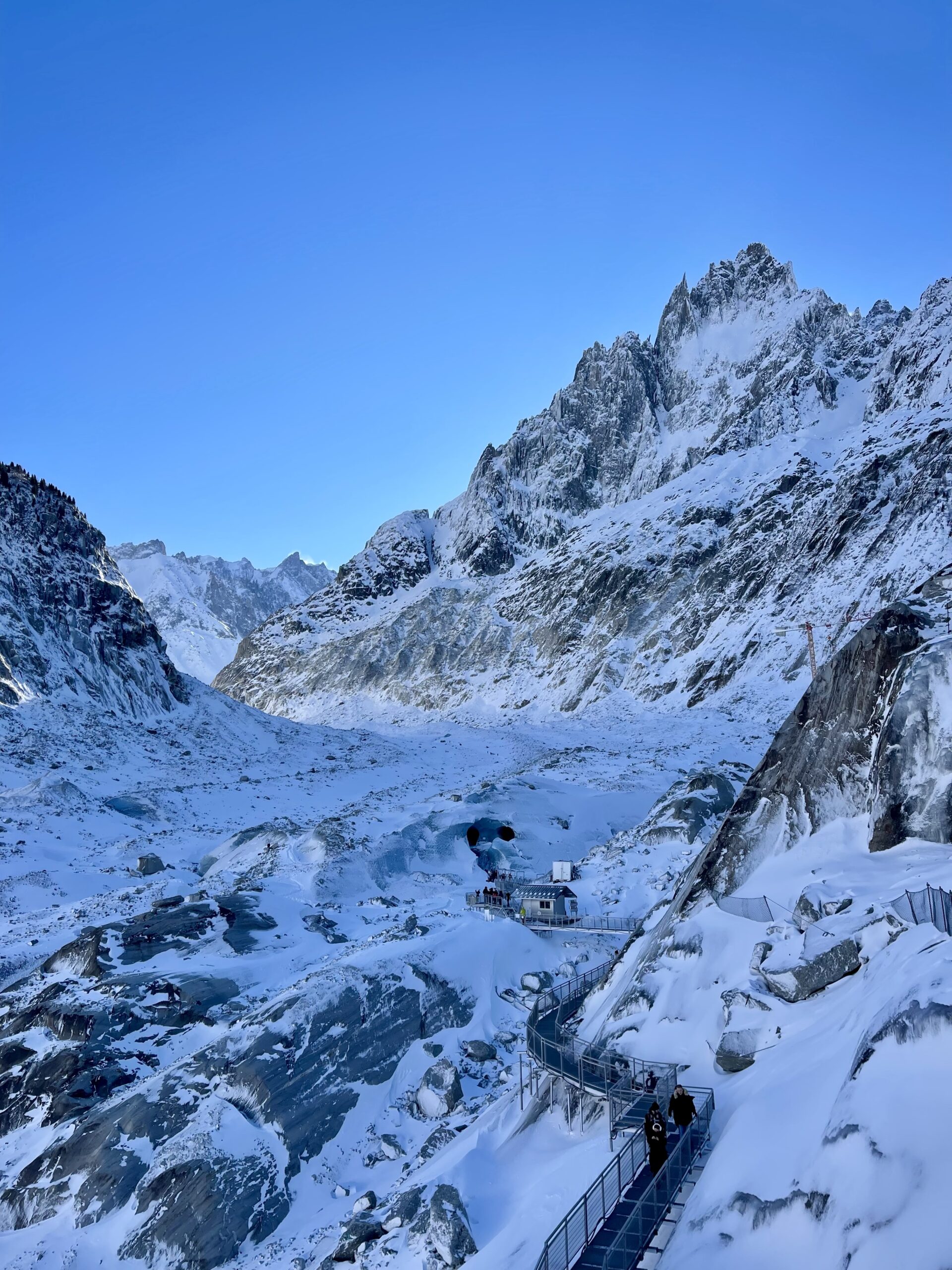
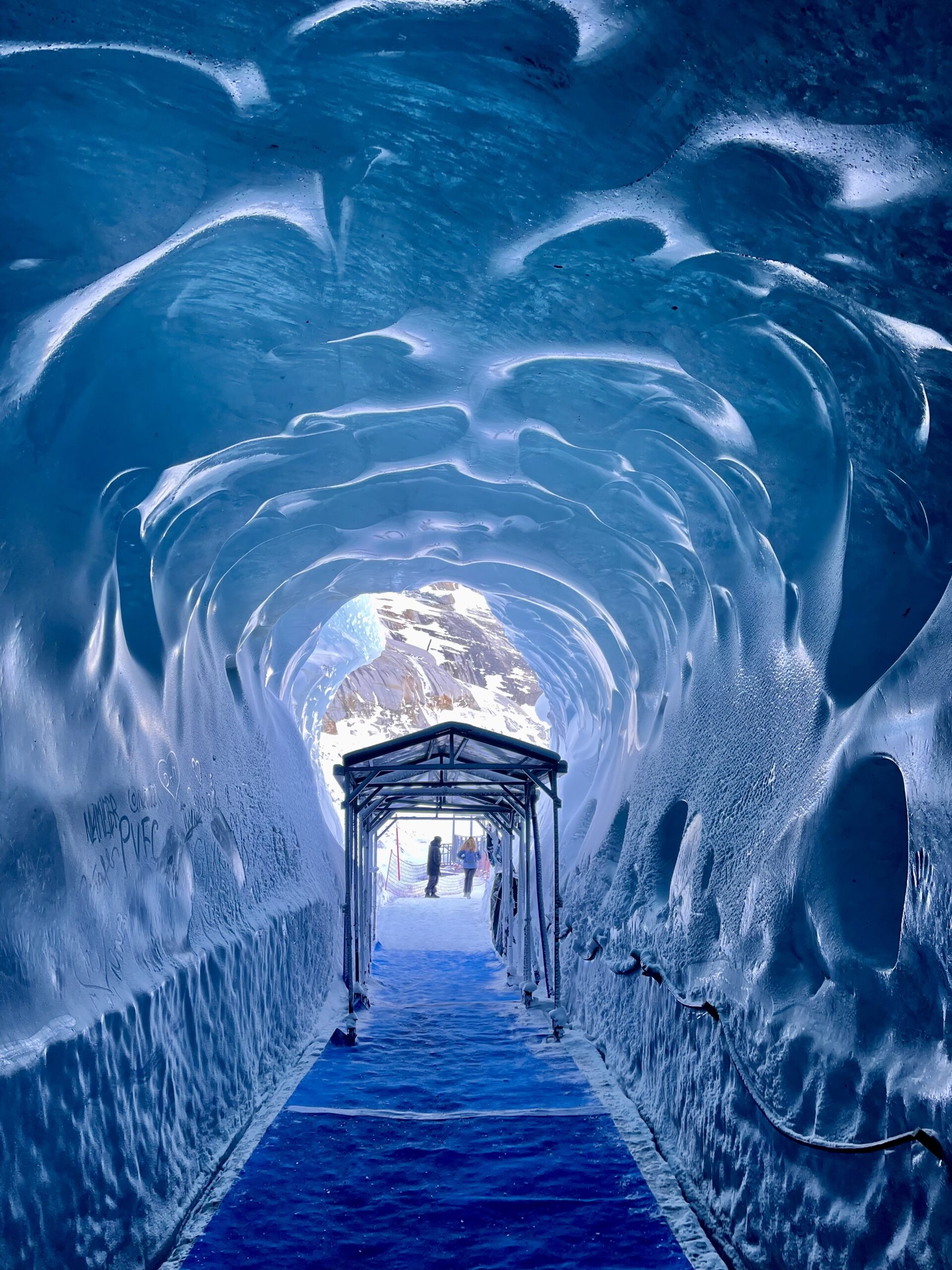
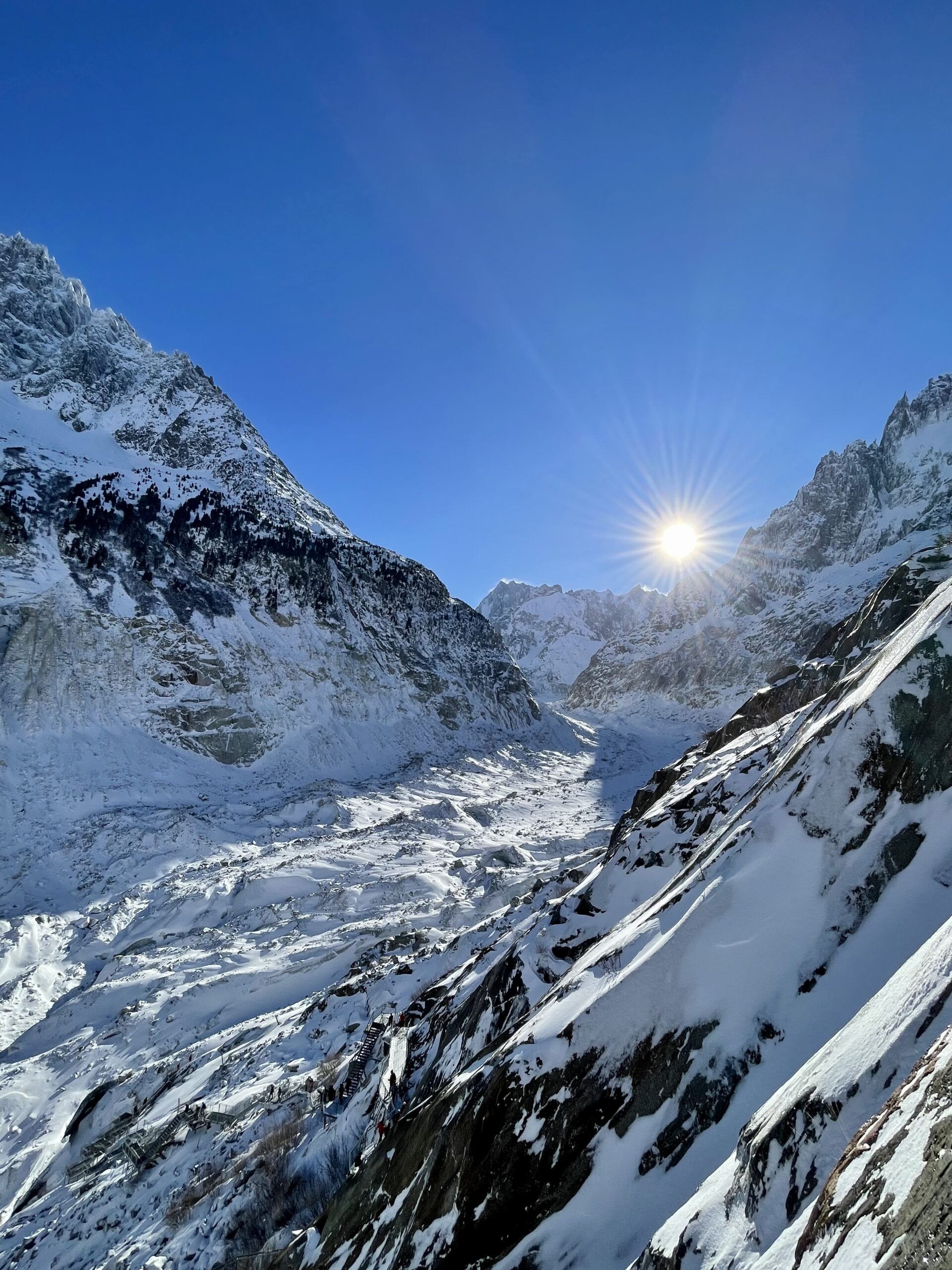
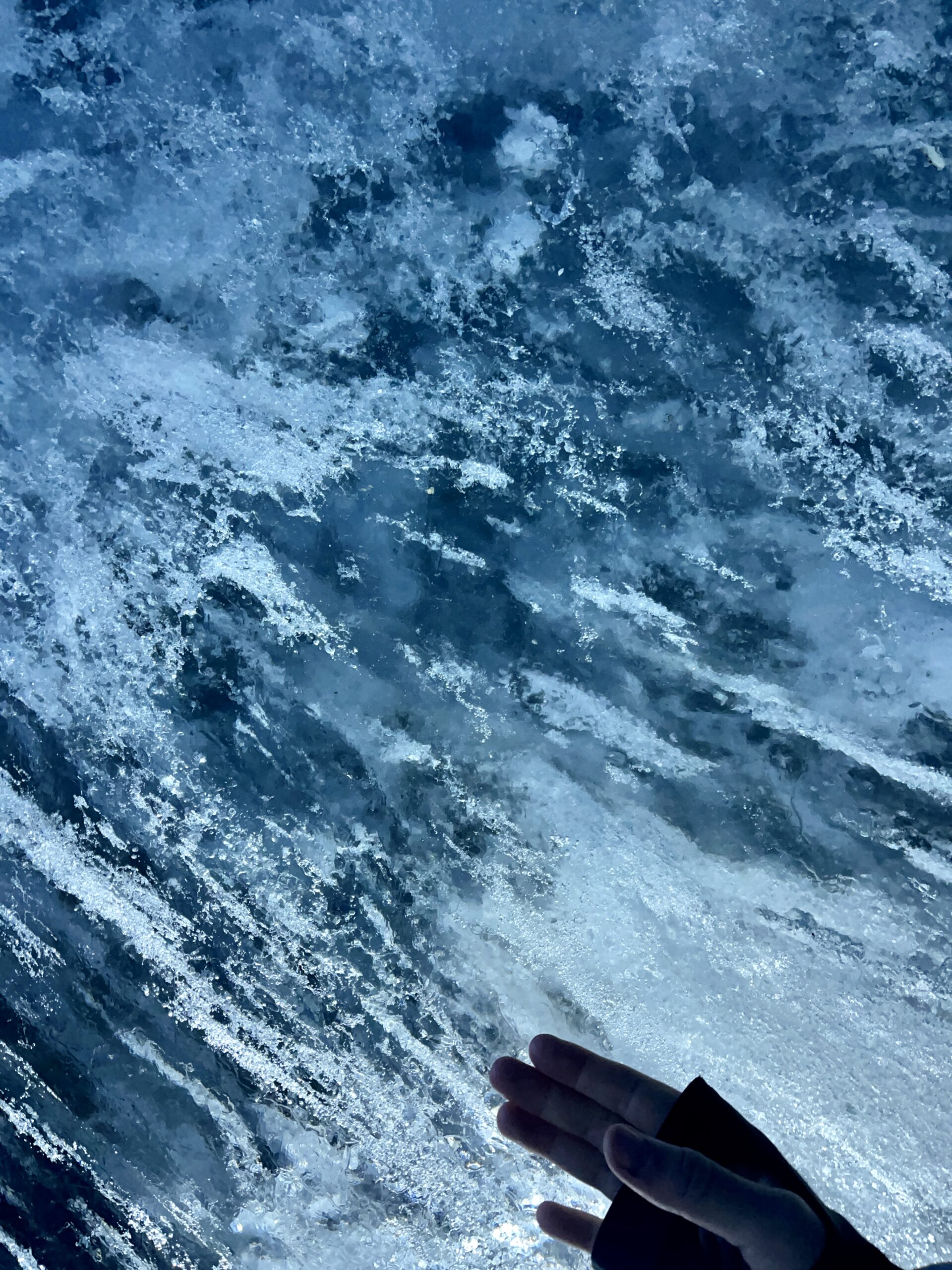
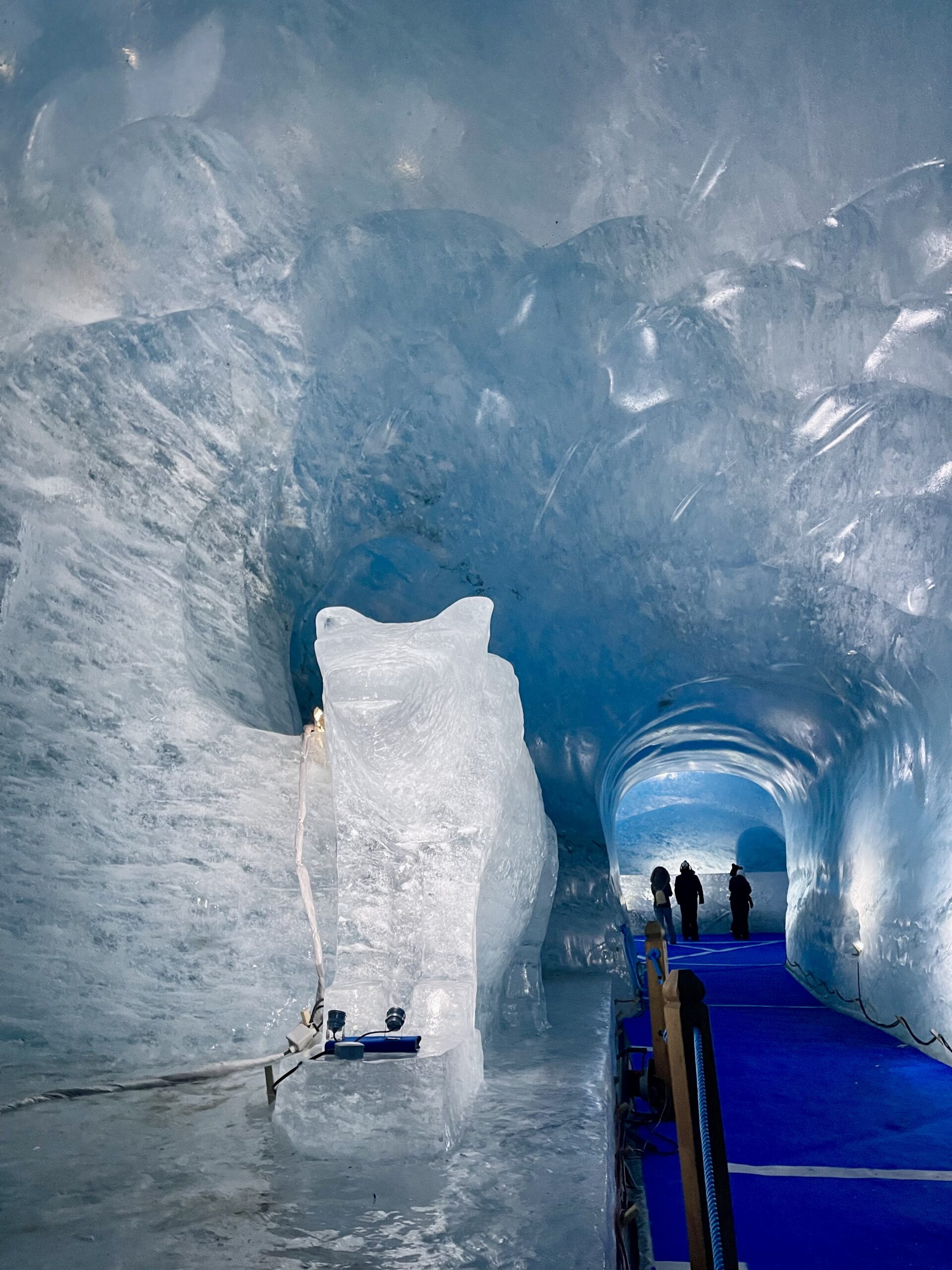
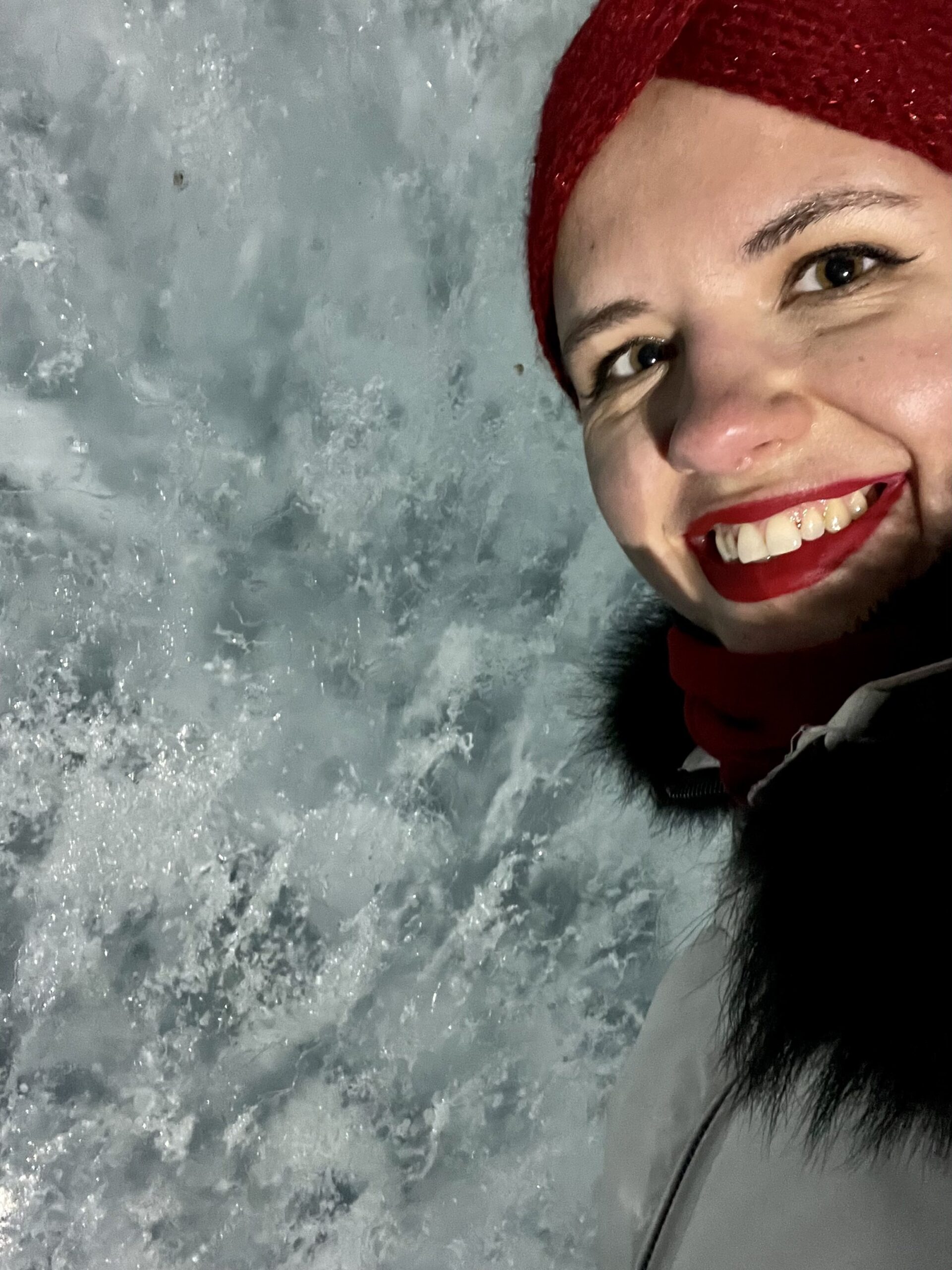
Practical Information
Tip #1: Chamonix is situated only 1-2 hours from the airport of Geneva and thus very easily reachable by bus, train or car. Personally, I took a bus from the bus station in Geneva city with the company SwissTours (that also organizes guided excursions to the Aiguille du Midi viewpoint of Mont Blanc), but there are many other options available, including FlixBus, Blablacar and the train!
Tip #2: Oh, this cable car is as high on my bucket list as the viewpoint it takes you to! The ‘Aiguille du Midi’ cable car transports you from 1,035 to 3,842 meters to enjoy a panoramic view of the Mont-Blanc (and/or start one of the numerous mountaineering routes). From there, you can also continue on the ‘Panoramic Mont-Blanc’ cable car, which brings you all the way to Pointe Helbronner in Italy whilst gliding over glaciers and past Mr. White.
Tip #3: Please don’t let the 400 steps scare you off: if you have a regular fitness level, it is absolutely doable. Go at your own pace! The walkways are easy to navigate and the views on the way to the cave are well worth the physical effort.
Accessibility
First of all, I used my phone to zoom in on the (English) subtitles at the ‘Glaciorum’s video presentation on the formation of the Mer de Glace. Unfortunately, they play only one version and the audio is in French. The informative posters in the cave also weren’t available in Braille nor in speech, so I would suggest downloading an app that can read text from pictures (such as Text Scanner or Speechify).
Also, don’t forget to bring your disability card. They offer very good discounts! Also be sure to check out the combination passes in case you wish to take the Aiguille du Midi (both the ascend and price are pretty steep…)! All information can be found on www.montblancnaturalresort.com
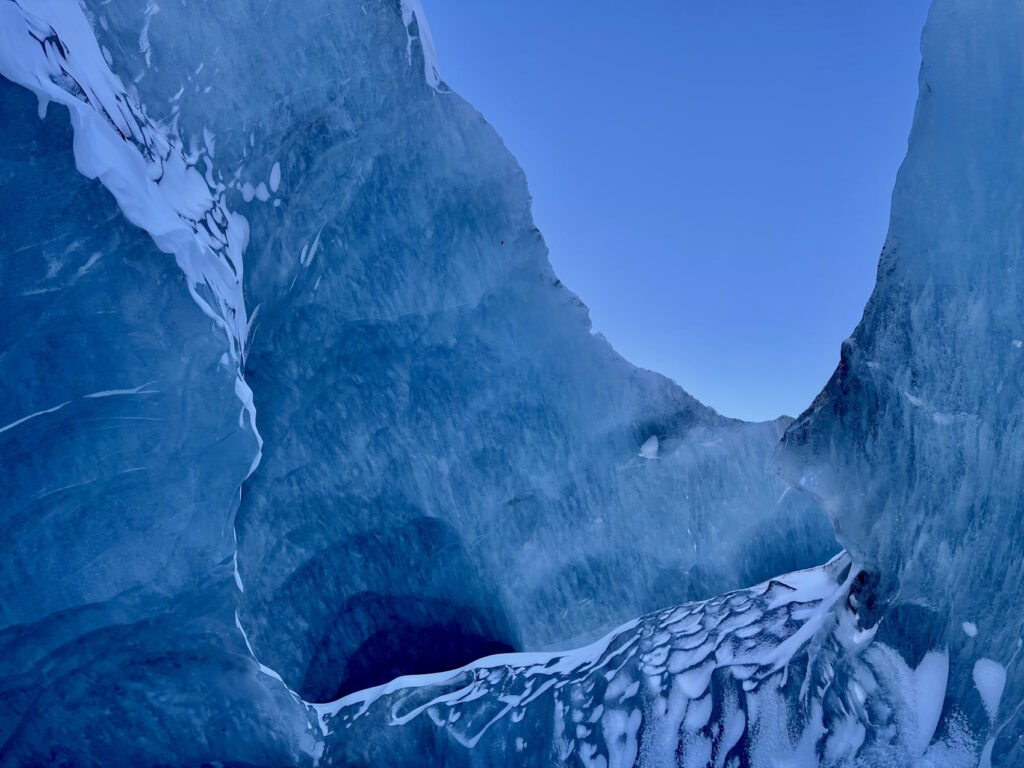

Wonderful that your site is up, very informative. Great discrptive commentary. And the tools for VI are a very welcome bonus.